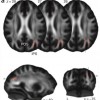Site Topics

The new "oldest" member to our hominid family tree
Nov 9th
During an anthropological expedition in 1992 to the Middle Awash river valley in Ethiopia, a research team led by Tim White uncovered a fascinating, previously unknown fossil Hominid. In 1994, the fossil was named Ardipithecus ramidus. In the Afar language, “Ardi” means ground floor and “ramid” means root.
Affectionately known as “Ardi”, some of her features were distinctive. Due to her location in the ancient Ethiopian strata, she was dated to 4.4 million years ago, pre-dating “Lucy” (Australopithecus afarensis) by over a million years. Her brain size was much smaller than Lucy’s but was similar to that of a modern chimpanzee. More >

How can I prolong health? Hmmm…..
Nov 6th
Having an edge on the stock market can allow one to make hundreds, thousands or even millions of dollars. But rarely do we think of having an edge on life. Since the sequencing of the human genome our understanding of human genes and their interaction has grown. Geneticists now have the capability to analyze genetic make-ups, and elucidate what genetic patterns will evolve into certain conditions or disease states.
Any individual has a unique genetic profile different from that of another person. Contained within these differences are unique genetic variations that may make a person more susceptible to diseases such as More >

What’s in a Weed?
Nov 4th
If you’re a geneticist, it’s likely that your experiments are not on humans, even if you’re studying human diseases. This is a concept we spend a great deal of time discussing with the 5th-8th graders who visit the DNA Learning Center. It’s hard for a youngster, and many adults for that matter, to understand how a worm or a bug might have anything in common with a human, nonetheless anything worth studying!
The most mystifying of the model organisms is the plant. How could a scientist possibly learn anything about human genetics from a plant? One popular model from the plant More >

SNP Snoop: BDNF and driving ability; failed road test?
Nov 2nd
Could an alternative version of your brain-derived neurotropic factor be an excuse for your failed road test?
According to research published in the Journal, Cerebral Cortex, by Stephanie McHughen et.al., a key SNP in BDNF (valine 66 mutated to methionine) impacts learning and memory functions, cognitive tools which happen to be crucial for operating an automobile.
During one of the described experiments, subjects were seated at a computer, with attached steering wheel as they had to keep the virtual car on a black line in the center of the screen. Subjects got to learn the driving circuit by following the car on 15, More >
Who’s My Other Mommy?
Oct 26th
Fraternal Rhesus Macaque twins, Mito and Tracker, have two different DNA mommies: their mother’s chromosomal DNA was injected into enucleated egg cells belonging to another Rhesus monkey female prior to fertilization. The eggs were fertilized, in vitro, with donor sperm and implanted in yet another female who carried the healthy twins to term.
The nucleus, where chromosomal DNA is stored and protected, is not the only source of DNA in a mammalian cell. Mitochondria have their own 16,569 bp genomes encoding 37 genes involved in the production of biological energy, ATP. Mutations in these genes have been linked with human diseases More >

Trembling Hands and … Genes?
Oct 23rd
Fragile X Tremor/Ataxia Syndrome (FXTAS) is among the most prevalent heritable neurodegenerative disorders. Its symptoms usually develop in men 50 years of age or older and include tremors in arms and hands, balance problems (ataxia), numbness in the extremities, mood instability, short-term memory loss, and gradual intellectual decline. The prevalence of FXTAS is about 2-5 persons per 10,000 in the general population.
The underlying cause for FXTAS is a mutation in the gene for Fragile X Mental Retardation Protein (FMRP), which is located on the X-chromosome; its protein product, Pur-α is essential for normal neural function. Scientists have recently determined the three-dimensional structure More >

The Continuum of Eugenics Practice
Oct 22nd
Francis Galton, the English scientist who coined the term, defined eugenics as “the agencies under social control that improve or impair the racial qualities of future generations either physically or mentally.” Charles Davenport, the father of the American eugenics movement called it simply “the self direction of human evolution.”
These definitions stress differences that occupied either end of a continuum of eugenics practice. At one end, Galton’s definition stressed social control, or laws, to control human reproduction. At the other end, Charles Davenport’s stressed an individual’s own control over their reproduction. Social control ultimately embodied “negative eugenics”– limiting mixed race marriages, More >

Canines and cancer
Oct 21st
For my blog, I thought I would talk a bit about dogs and cancer. Why, you might ask? I’m not a dog owner, but recently a few stories about dogs and cancer were brought to my attention and I thought they might be interesting to others.
You may not know this, but dogs can actually smell some cancers. It doesn’t even take a sophisticated sniffer dog to do this: even some household dogs can be trained to tell the difference between the odor of a normal person and that of a person with lung cancer. In theory, your dog Max could More >

White Matter Matters!
Oct 19th
Can you change the structure of your brain with practice? A slew of papers in the last decade affirm that yes, you very much can. Probably the best known is a study by Maguire and colleagues, who found structural differences in the hippocampi of London taxi drivers — presumably the result of having to learn London’s 25,000 streets. [We turned the Maguire et al. study into an online experiment, which you can play here].
To date, every study that identified practice-related changes in brain structure located these changes in grey matter. Now, for the first time, a paper by Scholz and colleagues More >

Pharmacowhat? Pharmacogenetics!
Oct 15th
Your genes affect not only how you look and your predisposition to disease, but it would appear that they also affect your responsiveness to different drug treatments following disease onset.
In the emerging field of pharmacogenetics, scientists study genome variations and correlate them with drug treatment response. For example, variations (also called polymorphisms) in genes encoding enzymes involved in drug metabolism have been found to affect the activation, deactivation, and toxicity of drugs used to treat cancer, heart disease, and psychiatric disorders. Recently, scientists found that DNA sequence can also be used to predict responsiveness to current Hepatitis C treatment (a More >
